Publications
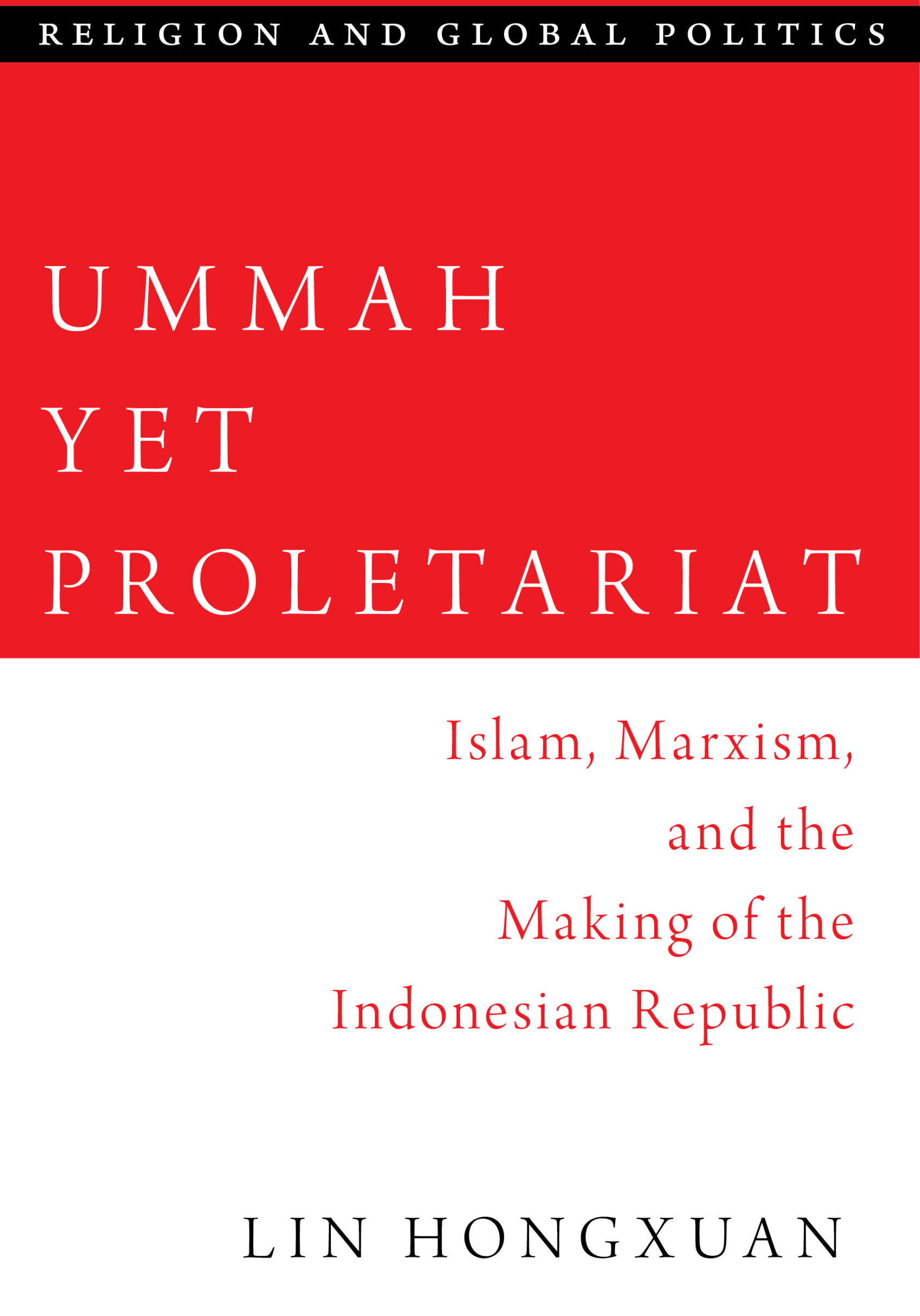
Ummah Yet Proletariat : Islam, Marxism, and the Making of the Indonesian Republic
Lin Hongxuan, Ummah Yet Proletariat : Islam, Marxism, and the Making of the Indonesian Republic, Oxford University Press, 2023
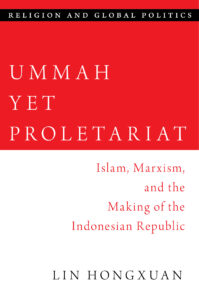
From 1965 to 1966, at least 500,000 Indonesians were killed in military-directed violence that targeted suspected Communists. Muslim politicians justified the killings, arguing that Marxism posed an existential threat to all religions. Since then, the demonization of Marxism, as well as the presumed irreconcilability of Islam and Marxism, has permeated Indonesian society. Today, the Indonesian military and Islamic political parties regularly invoke the spectre of Marxism as an enduring threat that would destroy the republic if left unchecked.
In Ummah Yet Proletariat, Lin Hongxuan explores the relationship between Islam and Marxism in the Netherlands East Indies (NEI) and Indonesia from the publication of the first Communist periodical in 1915 to the beginning of the 1965-66 massacres. Lin demonstrates how, in contrast to state-driven narratives, Muslim identity and Marxist analytical frameworks coexisted in Indonesian minds, as well as how individuals' Islamic faith shaped their openness to Marxist ideas. Examining Indonesian-language print culture, including newspapers, books, pamphlets, memoirs, letters, novels, plays, and poetry, Lin shows how deeply embedded confluences of Islam and Marxism were in the Indonesian nationalist project. He argues that these confluences were the result of Indonesian participation in networks of intellectual exchange across Asia, Europe, and the Middle East, of Indonesians "translating" the world to Indonesia in an ambitious project of creative adaptation.
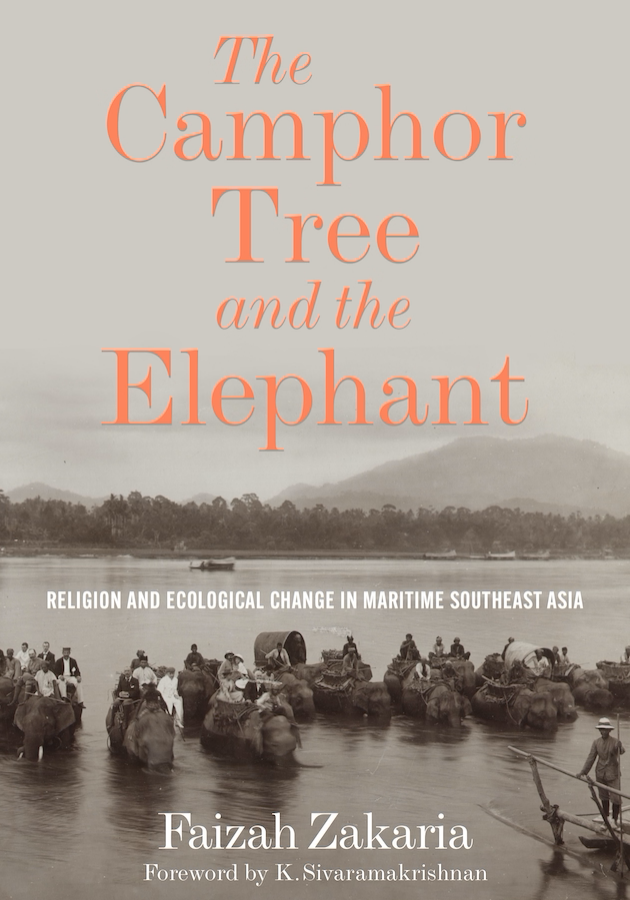
The Camphor Tree and the Elephant: Religion and Ecological Change in Maritime Southeast Asia
Faizah Zakaria, The Camphor Tree and the Elephant: Religion and Ecological Change in Maritime Southeast Asia, University of Washington Press, 2023
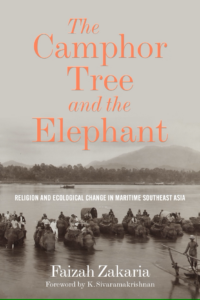
What is the role of religion in shaping interactions and relations between the human and nonhuman in nature? Why are Muslim and Christian organizations generally not a potent force in Southeast Asian environmental movements? The Camphor Tree and the Elephant brings these questions into the history of ecological change in the region, centering the roles of religion and colonialism in shaping the Anthropocene—“the human epoch.”
Historian Faizah Zakaria traces the conversion of the Batak people in upland Sumatra and the Malay Peninsula to Islam and Christianity during the long nineteenth century. She finds that the process helped shape social structures that voided the natural world of enchantment, ushered in a cash economy, and placed the power to remake local landscapes into the hands of a distant elite. Using a wide array of sources such as family histories, prayer manuscripts, and folktales in tandem with colonial and ethnographic archives, Zakaria brings everyday religion and its far-flung implications into our understanding of the environmental history of the modern world.
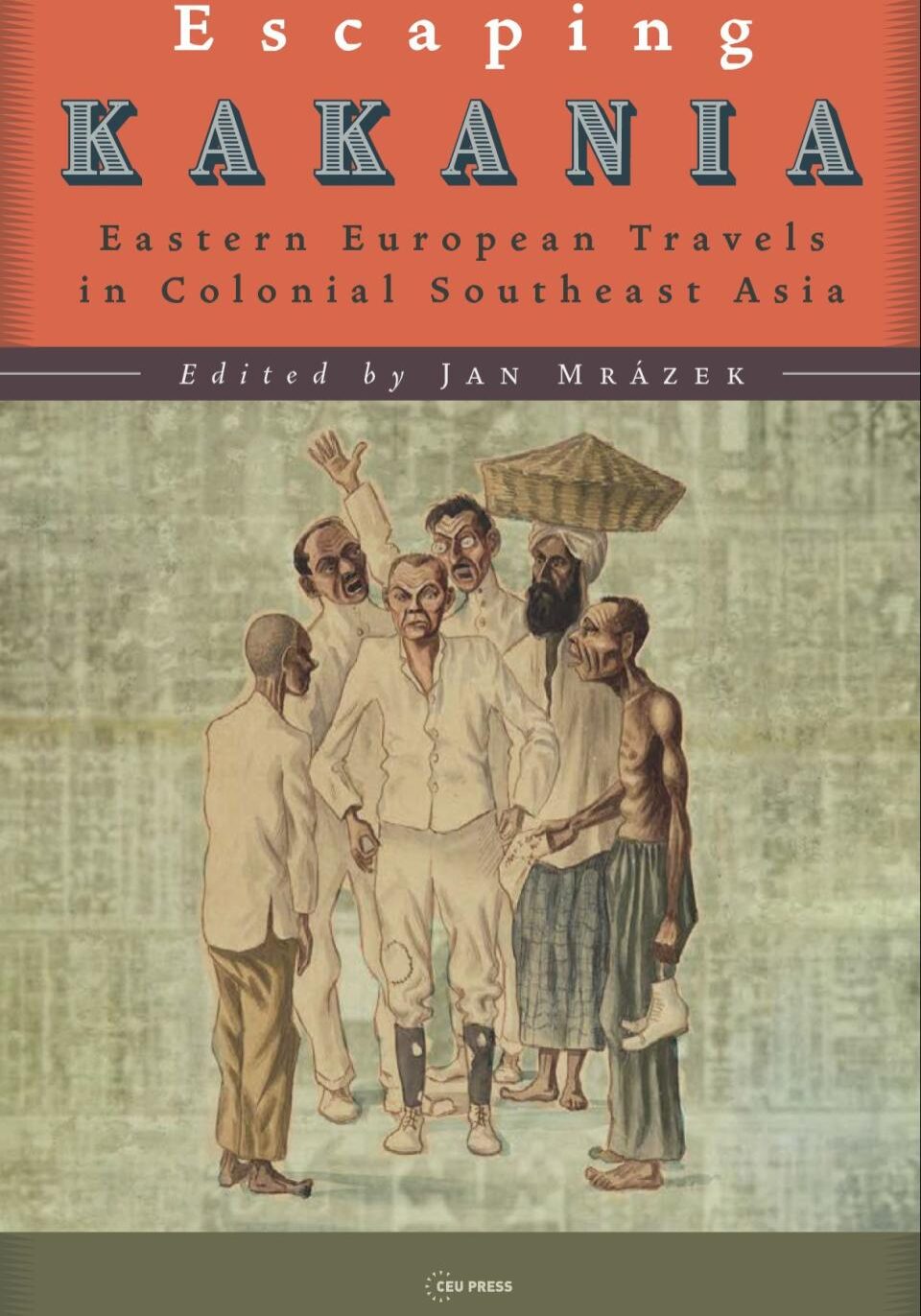
Escaping Kakania: Eastern European Travels in Colonial Southeast Asia
Jan Mrazek (eds.), Escaping Kakania: Eastern European Travels in Colonial Southeast Asia, Budapest: Central European University Press, 2024
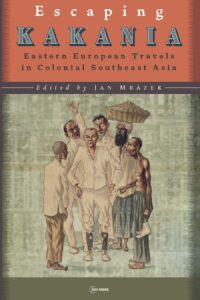 Escaping Kakania is about fascinating characters—soldiers, doctors, scientists, writers, painters—who traveled from their eastern European homelands to colonial Southeast Asia. Their stories are told by experts on different countries in the two regions, who bring diverse approaches into a conversation that crosses disciplinary and national borders.
Escaping Kakania is about fascinating characters—soldiers, doctors, scientists, writers, painters—who traveled from their eastern European homelands to colonial Southeast Asia. Their stories are told by experts on different countries in the two regions, who bring diverse approaches into a conversation that crosses disciplinary and national borders.
The 14 chapters deal with the diverse encounters of eastern Europeans with the many faces of colonial southeast Asia. Some essays directly engage with post-colonial studies, contributing to an ongoing critical re-evaluation of eastern European “semi-peripheral” (non-)involvement in colonialism. Other chapters disclose a range of perspectives and narratives that illuminate the plurality of the travelers’ positions while reflecting on the specificity of the eastern European experience.
The travellers moved—as do the chapter authors—between two regions that are off-centre, in-between, shiftingly “Eastern,” and disorientingly heterogeneous, thus complicating colonial and postcolonial notions of “Europe,” “East,” and East-West distinctions. Both at home and overseas, they navigated among a multiplicity of peoples, “races,” and empires, Occidents and Orients, fantasies of the Self and the Other, adopting/adapting/mimicking/rejecting colonialist identities and ideologies. They saw both eastern Europe and southeast Asia in a distinctive light, as if through each other—and so will the readers of Escaping Kakania.
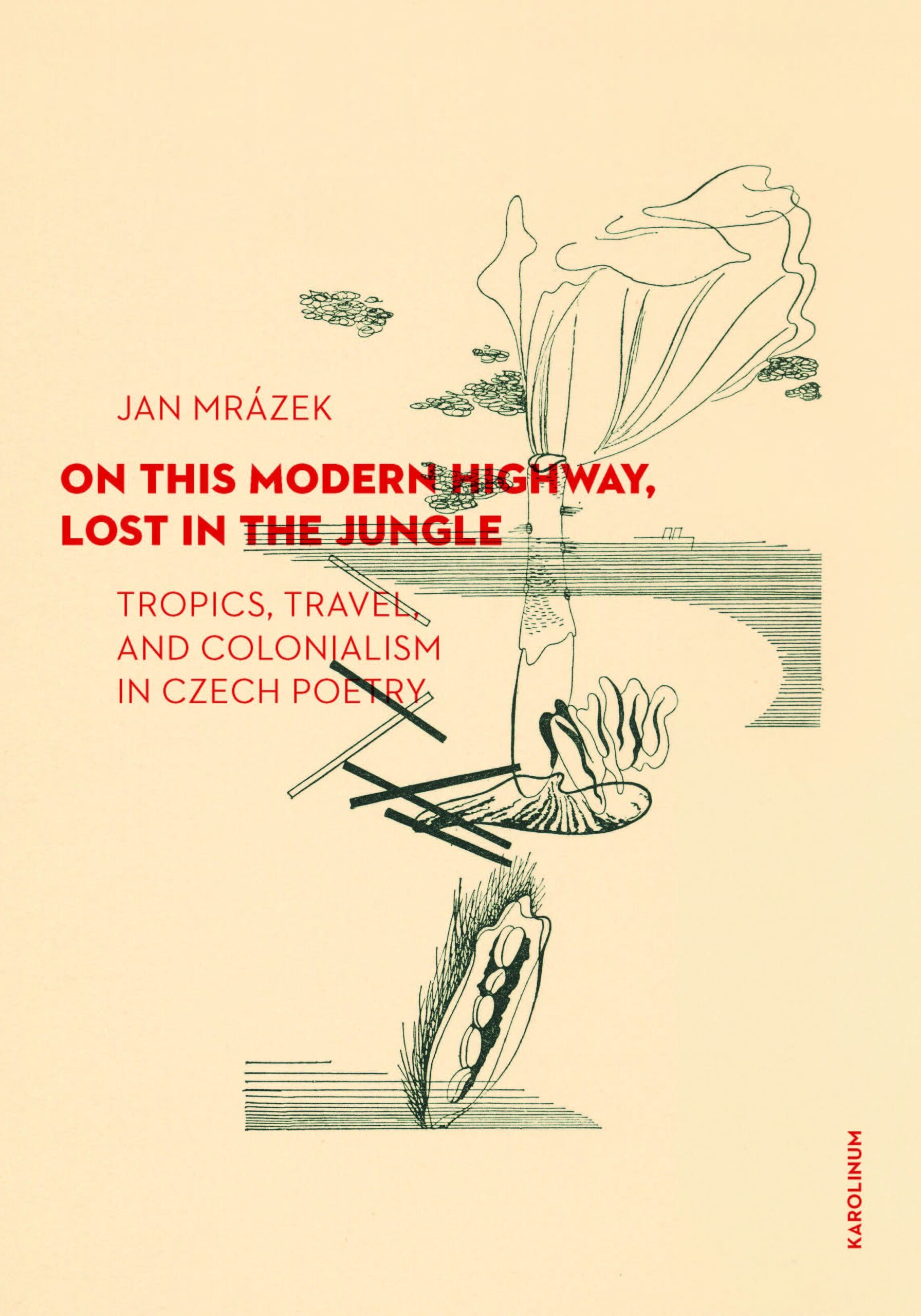
On This Modern Highway, Lost in the Jungle Tropics, Travel, and Colonialism in Czech Poetry
Mrazek, Jan, On This Modern Highway, Lost in the Jungle Tropics, Travel, and Colonialism in Czech Poetry, Czech: Karolinum Press, 2022
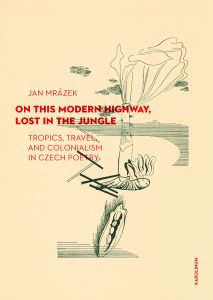
In 1926, the communist avant-garde poet Konstantin Biebl (1898–1951) travelled from Czechoslovakia to the Dutch East Indies. In his texts, poetic and often comic, both landlocked Bohemia and the colonized tropical islands are seen disorientingly anew, like “mirrors looking at themselves in each other.” On This Modern Highway, Lost in the Jungle takes the reader on a journey crisscrossing the poet’s life and work, with particular attention to his travel writing and his dreams and memories of travel, as they mirror the book author’s own life experience as a Czech scholar of Indonesia living in island Southeast Asia. Biebl’s poetry and travels are also the book’s point of departure for a broader exploration of the intersections of travel and poetry, the attitudes to colonial/social injustice, and the representation of otherness in Czech literary and visual imagination, beyond Biebl’s times. In its attention to how poetic travel reflects the Czech historical experience in the shadow of imperial nations, the book moves scholarly reflection on literary travel, modernity, and colonialism to a new ground.
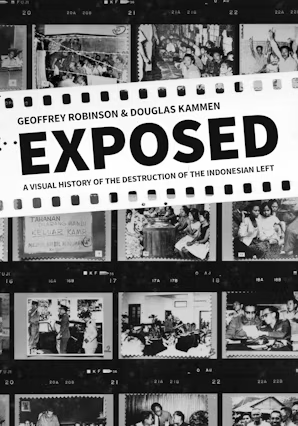
Exposed: A Visual History of the Destruction of the Indonesian Left
Geoffrey Robinson & Douglas Kammen (2025). Exposed: A visual history of the destruction of the Indonesian Left. Cornell University Press
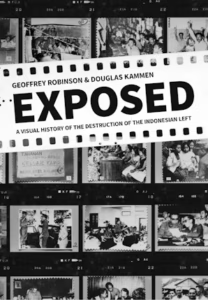 Exposed tells the story of the orchestrated mass violence of 1965-1968 in Indonesia and its aftermath. By highlighting visual imagery, Geoffrey Robinson and Douglas Kammen fill a void in existing accounts, challenge distorted official narratives, and establish a basis on which new social memories and interpretations might be formed.
Exposed tells the story of the orchestrated mass violence of 1965-1968 in Indonesia and its aftermath. By highlighting visual imagery, Geoffrey Robinson and Douglas Kammen fill a void in existing accounts, challenge distorted official narratives, and establish a basis on which new social memories and interpretations might be formed.
Following an alleged coup attempt on October 1, 1965, at least half a million members of the legal Communist Party of Indonesia and other leftist organizations were killed and another million or so were detained and held for long periods without charge or trial. The consequences of these events were far-reaching and marked a crucial turning point in the Cold War. In less than a year, the largest non-governing Communist party in the world was crushed, and the country's popular left-nationalist President Sukarno was swept aside, signaling the start of more than three decades of military-backed authoritarian rule. Exposed is the first-ever visual history of these important, but long-obscured, events.
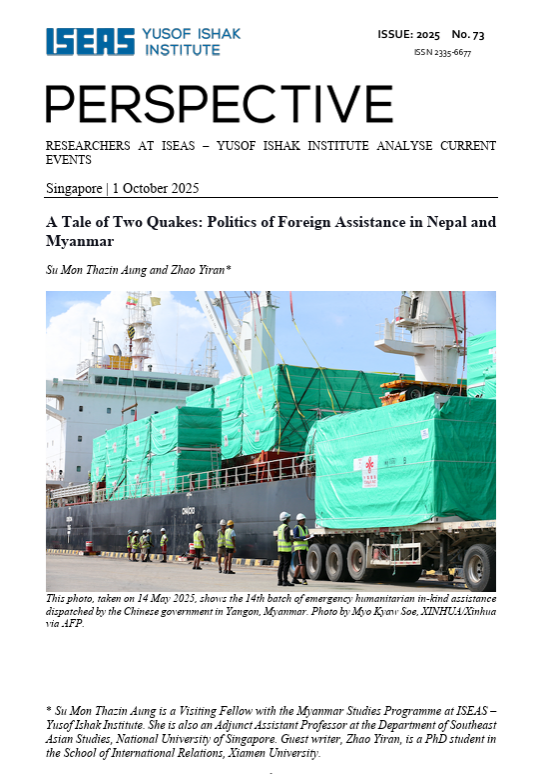
A Tale of Two Quakes: Politics of Foreign Assistance in Nepal and Myanmar
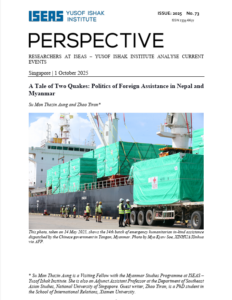
- The military regime’s focus on election preparations seems to have sidelined efforts to address the extensive destruction and humanitarian suffering following a powerful earthquake that hit central Myanmar on 28 March 2025.
- The international response to the March earthquake has been notably muted, unlike the responses to Nepal’s 2015 earthquake. Nepal’s buffer state status between China and India gave it a strategic advantage for disaster recovery.
- While Nepal received a pledge of US$4.4 billion in 2015, total pledges to Myanmar in 2025 barely exceeded US$440 million. The response to Myanmar’s 2025 earthquake was significantly lower for both bilateral and coordinated funding contributions.
- Limited foreign aid post-quake was not only due to the Myanmar military’s poor regime legitimacy amid a constrained global aid environment; the geopolitical stakes of neighbouring powers also influenced post-disaster aid flows. China’s swift and assertive attempts to resolve the Myanmar crisis, and India’s slower, more reactive moves, were influenced by the respective degree of geopolitical stakes in the country.
- In comparing the responses to the two earthquakes, a decade apart, this paper highlights the non-neutral nature of humanitarian aid, suggesting a need to rethink current humanitarian aid models that deprioritise conflict-affected and politically isolated states.
* Su Mon Thazin Aung is a Visiting Fellow with the Myanmar Studies Programme at ISEAS – Yusof Ishak Institute. She is also an Adjunct Assistant Professor at the Department of Southeast Asian Studies, National University of Singapore. Guest writer, Zhao Yiran, is a PhD student in the School of International Relations, Xiamen University.
ISEAS Perspective 2025/73, 1 October 2025
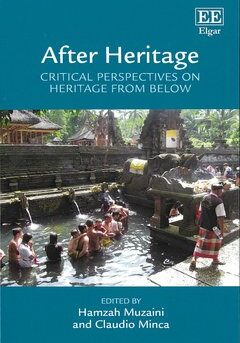
After Heritage: Critical Perspectives on Heritage from Below
Muzaini, Hamzah and Claudio Minca (eds.), After Heritage: Critical Perspectives on Heritage from Below, UK and US: Edward Elgar Publishing, 2018.
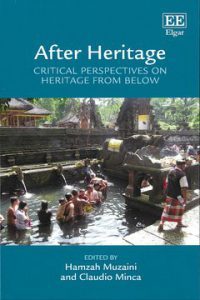 Focusing on the practices and politics of heritage-making at the individual and the local level, this book uses a wide array of international case studies to argue for their potential not only to disrupt but also to complement formal heritage-making in public spaces. Providing a much-needed clarion call to reinsert the individual as well as the transient into more collective heritage processes and practices, this strong contribution to the field of Critical Heritage Studies offers insight into benefits of the ‘heritage from below approach’ for researchers, policy makers and practitioners.
Focusing on the practices and politics of heritage-making at the individual and the local level, this book uses a wide array of international case studies to argue for their potential not only to disrupt but also to complement formal heritage-making in public spaces. Providing a much-needed clarion call to reinsert the individual as well as the transient into more collective heritage processes and practices, this strong contribution to the field of Critical Heritage Studies offers insight into benefits of the ‘heritage from below approach’ for researchers, policy makers and practitioners.
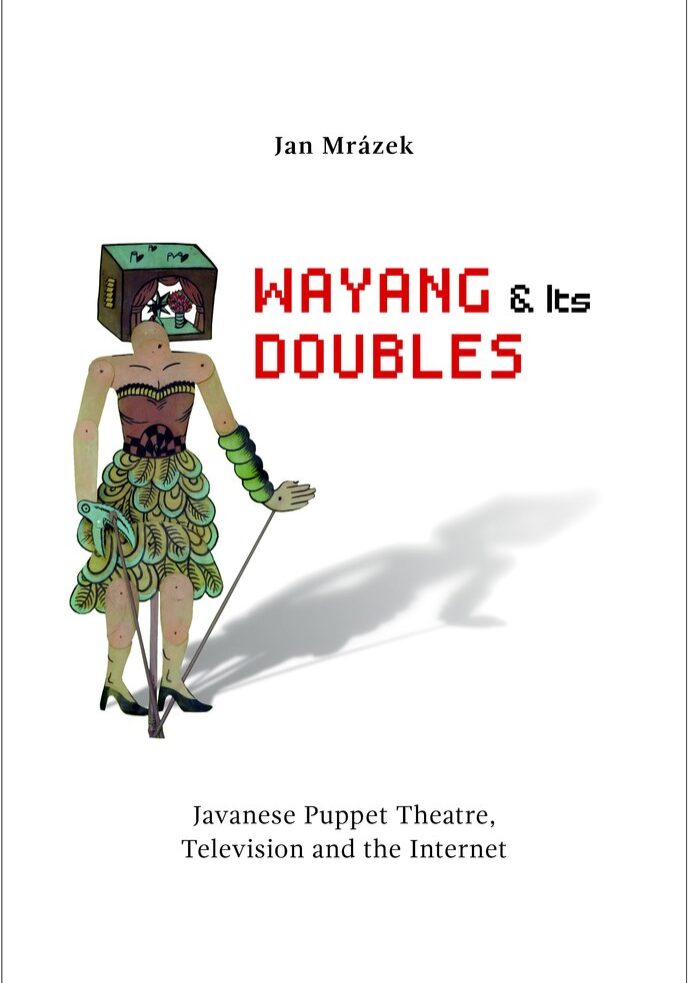
Wayang and Its Doubles: Javanese Puppet Theatre, Television and the Internet
Mrazek, Jan, Wayang and Its Doubles: Javanese Puppet Theatre, Television and the Internet, Singapore: NUS Press, 2019
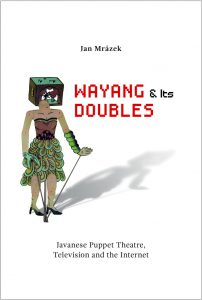
Much has been said about how Javanese puppet theatre, wayang kulit, richly reflects the Javanese world, and how changes and tensions in performance practice mirror those in culture and society. For decades, television has been as intensely part of the Javanese world as wayang. This book explores the ways two complex media and modes of being, seeing and fantasizing, with their different cultures, coexist and meet, and haunt or invade each other. It is what a Javanese commentator calls a “difficult marriage”: intimate on the one hand, deeply alienating on the other, institutionalized yet at the same time mercurial and shifting.
This encounter is explored on many levels: from performance aesthetics and the technicalities of television production, to issues of time, space, light, place, and movement, to audience experience of live and televised performances, to the collaboration and struggle between performers and television producers. Central to the book are personal perspectives and experiences, as well as Javanese discussions surrounding the interaction between wayang and television and their cultures.
They are brought into a conversation with reflections on media and technology by writers such as Karl Marx, Martin Heidegger, Maurice Merleau-Ponty, Jacques Derrida, Paul Virilio, and James Siegel. Wayang’s relationship with television is considered in the context of the theatre’s intercourse with older and newer media, including electricity, radio, audio- and video-recording, the internet and social media.
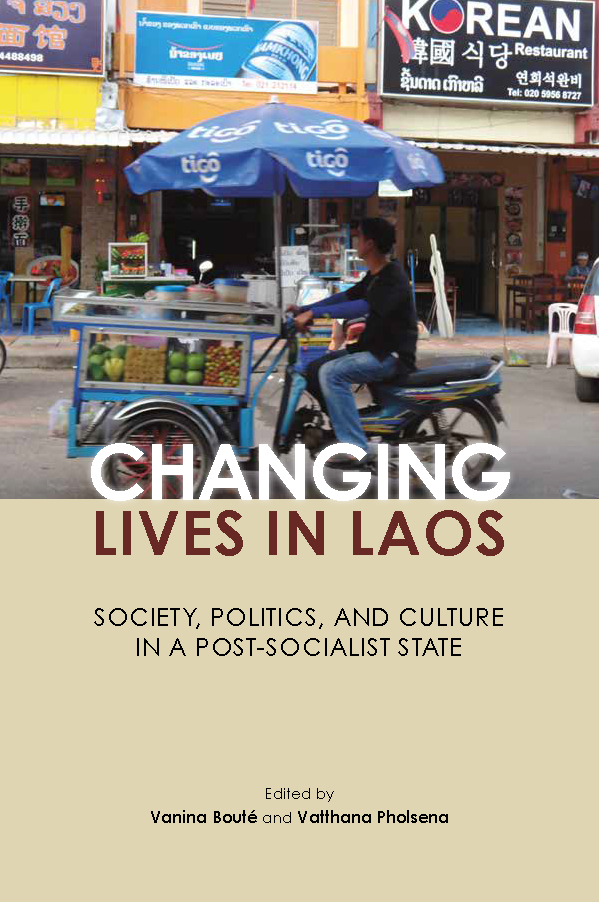
Changing Lives in Laos
Changing Lives in Laos. Society, Politics, and Culture in a Post-Socialist State, co-edited with Vanina Bouté, Singapore: NUS Press, 2017.
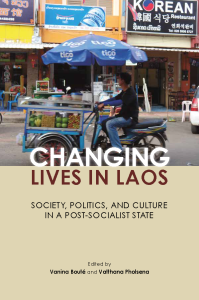
One of the lesser-studied countries in Southeast Asia, Laos has gone through momentous changes over the last two decades. Social and economic transformations have reshaped the country considerably and been felt both in major cities and by the rural households that account for 70% of the population. This multi-disciplinary collection of articles penned by leading scholars on Laos in anthropology, geography, history, and political science, explores key issues that are highly relevant to our understanding of important dynamics in present-day Laos, including the historical and sociological dimensions of the Lao Party-State and political elite, the correlated phenomena of agrarian change and migration, as well as inter-ethnic relationships and the emergence of new social networks in an increasingly mobile society. These contributions draw on several years of fieldwork and successfully challenge the outworn stereotype of a country where pace of change is slow and people’s lives are dictated by external events instead of (also) being driven by opportunities.
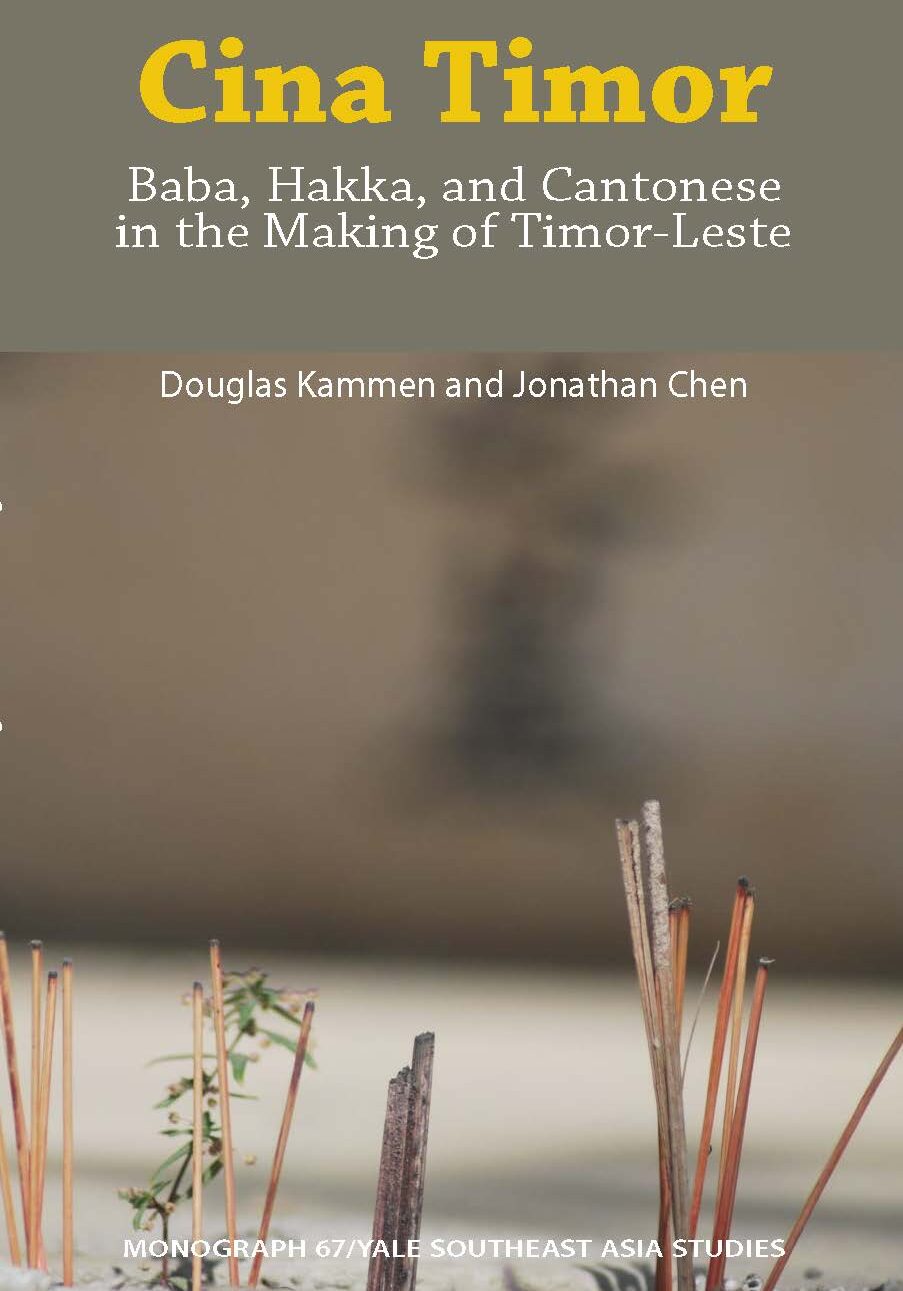
Cina Timor: Baba, Hakka and Cantonese in the Making of Timor-Leste
Kammen, Douglas and Jonathan Chen, Cina Timor: Baba, Hakka and Cantonese in the Making of Timor-Leste, New Haven: Yale Southeast Asia Studies, 2019
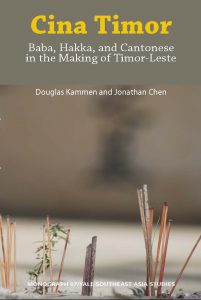
Although they were a tiny minority in the most backward of European colonies, the ethnic Chinese played a critical role in the development of Portuguese Timor and the making of modern Timor-Leste. Against their portrayal either as comprador merchants whose sole concern was profit or as hapless victims of tragically recurrent mass violence, this book explores the diverse origins of the ethnic Chinese in Portuguese Timor — early Hokkien-speaking pioneers whose creole offspring engaged in trade both with and against the colonial state, Hakka-speaking agriculturalists from the Pearl River Delta and Meixian regions of Guangdong, Macanese civil servants in the colonial administration, and Cantonese convicts sent to serve out their sentences on Timor’s distant shores. Drawing on Portuguese and Chinese primary sources, the book traces the intersection of colonial state practices, Chinese associational forms, and republican ideals out of which emerged a distinct identity as Cina Timor — Chinese Timorese.
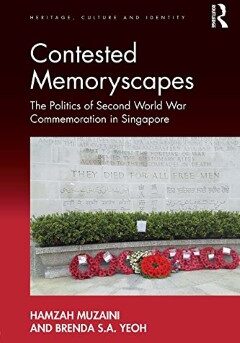
Contested Memoryscapes: The Politics of Second World War Commemoration in Singapore
Muzaini, Hamzah and Brenda S.A. Yeoh, Contested Memoryscapes: The Politics of Second World War Commemoration in Singapore, London and New York: Routledge, 2016
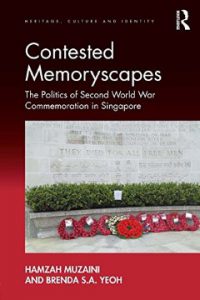 This book sets itself apart from much of the burgeoning literature on war commemoration within human geography and the social sciences more generally by analysing how the Second World War (1941–45) is remembered within Singapore, unique for its potential to shed light on the manifold politics associated with the commemoration of wars not only within an Asian, but also a multiracial and multi-religious postcolonial context. By adopting a historical materialist approach, it traces the genealogy of war commemoration in Singapore, from the initial disavowal of the war by the postcolonial government since independence in 1965 to it being embraced as part of national historiography in the early 1990s apparent in the emergence since then of various memoryscapes dedicated to the event. Also, through a critical analysis of a wide selection of these memoryscapes, the book interrogates how memories of the war have been spatially and discursively appropriated today by state (and non-state) agencies as a means of achieving multiple objectives, including (but not limited to) commemoration, tourism, mourning and nation-building. And finally, the book examines the perspectives of those who engage with or use these memoryscapes in order to reveal their contested nature as fractured by social divisions of race, gender, ideology and nationality.
This book sets itself apart from much of the burgeoning literature on war commemoration within human geography and the social sciences more generally by analysing how the Second World War (1941–45) is remembered within Singapore, unique for its potential to shed light on the manifold politics associated with the commemoration of wars not only within an Asian, but also a multiracial and multi-religious postcolonial context. By adopting a historical materialist approach, it traces the genealogy of war commemoration in Singapore, from the initial disavowal of the war by the postcolonial government since independence in 1965 to it being embraced as part of national historiography in the early 1990s apparent in the emergence since then of various memoryscapes dedicated to the event. Also, through a critical analysis of a wide selection of these memoryscapes, the book interrogates how memories of the war have been spatially and discursively appropriated today by state (and non-state) agencies as a means of achieving multiple objectives, including (but not limited to) commemoration, tourism, mourning and nation-building. And finally, the book examines the perspectives of those who engage with or use these memoryscapes in order to reveal their contested nature as fractured by social divisions of race, gender, ideology and nationality.
The substantive book chapters will be based on archival and empirical data drawn from case studies in Singapore themed along different conceptual lenses including ethnicity; gender; postcoloniality, tourism and postmodernity; personal mourning; transnational remembrances and politics; and the preservation of original sites, stories and artefacts of war.
Collectively, they speak to and work towards shedding insights to the one overarching question: 'How is the Second World War commemorated in postcolonial Singapore and what are some of the issues, politics and contestations which have accompanied these efforts to presence the war today, particularly as they are spatially and materially played out via different types of memoryscapes?' The book also distinguishes itself from previous works written on war commemoration in Singapore, mainly by social and military historians, particularly through its adoption of a geographical agenda that gives attention to issues of politics of space as it relates to remembrance and representations of memory.

Three Centuries of Conflict in East Timor
Kammen, Douglas, Three Centuries of Conflict in East Timor, US: Rutgers University Press, 2015
 Why does violence recur in some places, over long periods of time? Douglas Kammen explores this pattern in Three Centuries of Conflict in East Timor, studying that island’s tragic past, focusing on the small district of Maubara.
Why does violence recur in some places, over long periods of time? Douglas Kammen explores this pattern in Three Centuries of Conflict in East Timor, studying that island’s tragic past, focusing on the small district of Maubara.
Once a small but powerful kingdom embedded in long-distance networks of trade, over the course of three centuries the people of Maubara experienced benevolent but precarious Dutch suzerainty, Portuguese colonialism punctuated by multiple uprisings and destructive campaigns of pacification, Japanese military rule, and years of brutal Indonesian occupation. In 1999 Maubara was the site of particularly severe violence before and after the UN-sponsored referendum that finally led to the restoration of East Timor’s independence.
The questions posed in Three Centuries of Conflict in East Timor about recurring violence and local narratives apply to many other places besides East Timor—from the Caucasus to central Africa, and from the Balkans to China—wherever mass violence keeps recurring.
This book is also published by NUS Press Singapore for distribution in Southeast Asia.

Post-war Laos: The Politics of Culture, History and Identity
Post-war Laos: The Politics of Culture, History and Identity, Singapore/New York: Institute of Southeast Asian Studies/Cornell University Press, 2006.
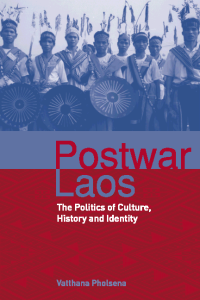
More than a quarter of century after the end of the war in 1975, the Lao leadership is still in search for a compelling nationalist narration. Its politics of culture and representation appear to be caught between the rhetoric of preservation and the desire for modernity. Meanwhile, originating from the periphery where ethnic minorities had hitherto been symbolically, politically and administratively confined, the participation of some of their members in the Indochina Wars (1945-75) exposed these individuals to socialization and politicization processes. This rigorously researched and cogently argued book is a fine-grained analysis of substantial ethnographic material, showing the politics of identity, the geographies of memory and the power of narratives of some members of ethnic minority groups who fought during the Vietnam War in the Lao People's Liberation Army and/or were educated within the revolutionary administration. No study has ever been conducted on the latter's views on the national(ist) project of the late socialist era. Their own perceptions of their membership of the nation have been overlooked. Post-War Laos is a landmark study and an original contribution which refines established theories of nationalism, such as Anderson's imagined community, by addressing a common weakness: namely, their tendency to deny agency to individuals, who in fact interpret their relationship to, and place within, the nation in a variety of ways that may change according to time and circumstance.
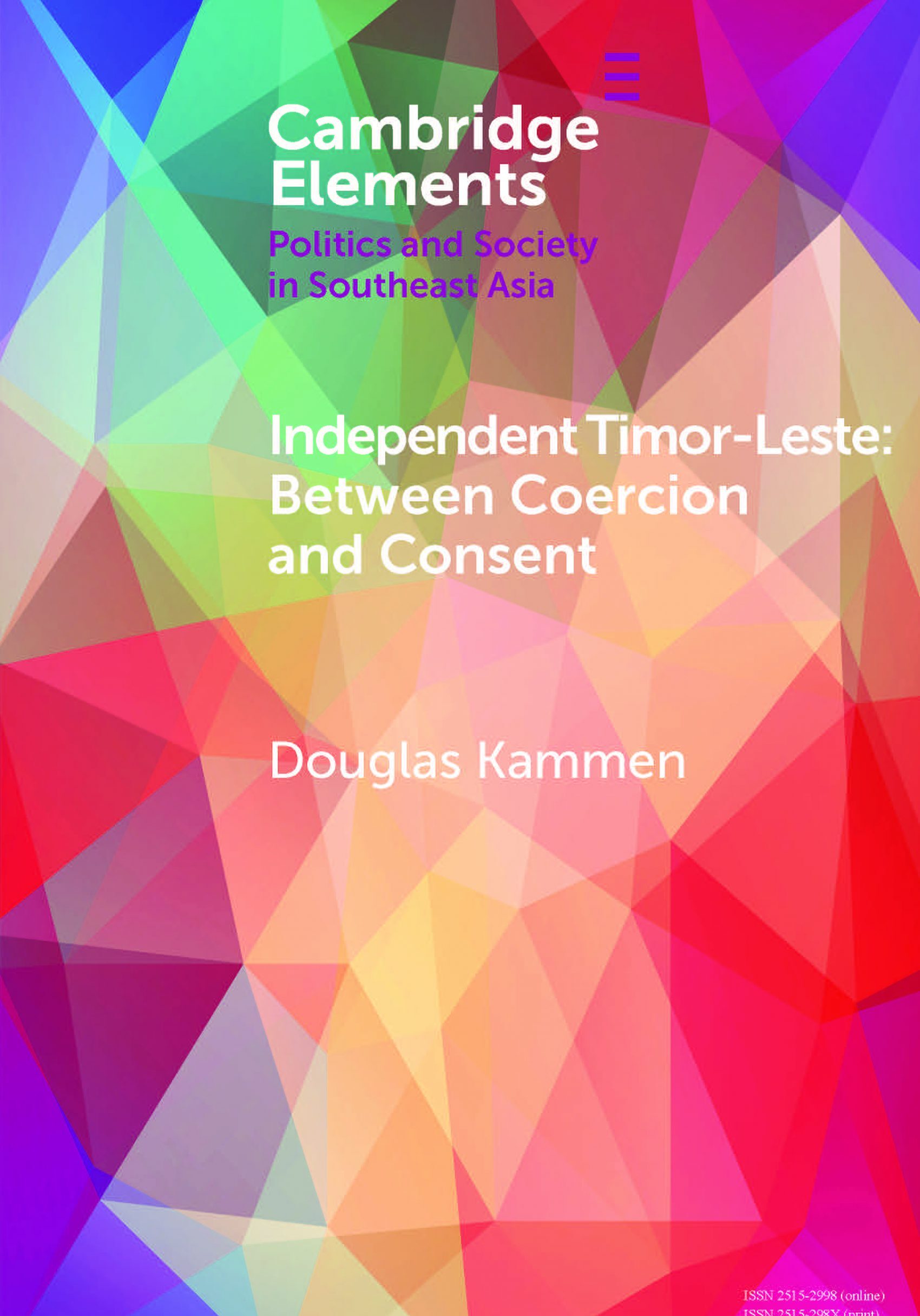
Independent Timor Leste: Between Coercion and Consent
Kammen, Douglas, Independent Timor-Lest Between Coercion and Consent, UK: Cambridge University Press, 2019
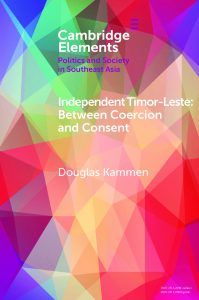 This Element explores the primary modes by which rulers have exercised power and shaped political relations in Timor-Leste across four distinct periods. The contrast between coercion under colonial rule and consent expressed through the 1999 referendum on independence exerted a powerful influence on scholarship on Timor-Leste’s politics and future. Since the restoration of independence in 2002, however, politics in Timor-Leste are best understood in terms of powerful economic constraints during the first Fretilin government (2002–06), and thereafter, thanks to revenue from the country’s petroleum reserves, a ruling strategy based on a wide range of inducements (rather than genuine consent).
This Element explores the primary modes by which rulers have exercised power and shaped political relations in Timor-Leste across four distinct periods. The contrast between coercion under colonial rule and consent expressed through the 1999 referendum on independence exerted a powerful influence on scholarship on Timor-Leste’s politics and future. Since the restoration of independence in 2002, however, politics in Timor-Leste are best understood in terms of powerful economic constraints during the first Fretilin government (2002–06), and thereafter, thanks to revenue from the country’s petroleum reserves, a ruling strategy based on a wide range of inducements (rather than genuine consent).
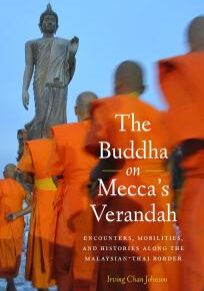
The Buddha on Mecca's Verandah: Encounters, Mobilities, and Histories along the Malaysian-Thai Border (Critical Dialogues in Southeast Asian Studies)
Johnson, Irving Chan, The Buddha on Mecca's Verandah: Encounters, Mobilities, and Histories along the Malaysian-Thai Border (Critical Dialogues in Southeast Asian Studies), Seattle: University of Washington Press, 2012
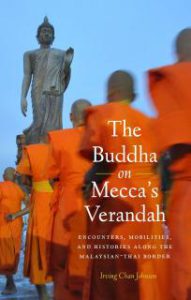 The Buddha on Mecca's Verandah examines the many ways in which people living along an international border negotiate their ethnic, cultural, and political identities. This ethnography of a small community of Thai Buddhists in the Malaysian state of Kelantan draws on rich, original vignettes to show how issues such as territoriality, identity, and power frame the experiences of borderland residents. Although the Thai represent less than 10 percent of the Kelantan population, they are vocal about their identity as non-Muslim, non-Malay citizens. They have built some of the world's largest Buddhist statues in their tiny villages, in a state that has traditionally been a seat of Islamic governance. At the same time, the Thai grapple with feelings of social and political powerlessness, being neither Thai citizens nor Muslim Malaysians. This thoughtful study offers new perspectives and challenges the classical definition of boundaries and borders as spaces that enforce separation and distance.
The Buddha on Mecca's Verandah examines the many ways in which people living along an international border negotiate their ethnic, cultural, and political identities. This ethnography of a small community of Thai Buddhists in the Malaysian state of Kelantan draws on rich, original vignettes to show how issues such as territoriality, identity, and power frame the experiences of borderland residents. Although the Thai represent less than 10 percent of the Kelantan population, they are vocal about their identity as non-Muslim, non-Malay citizens. They have built some of the world's largest Buddhist statues in their tiny villages, in a state that has traditionally been a seat of Islamic governance. At the same time, the Thai grapple with feelings of social and political powerlessness, being neither Thai citizens nor Muslim Malaysians. This thoughtful study offers new perspectives and challenges the classical definition of boundaries and borders as spaces that enforce separation and distance.
With insights applicable to comparative border and frontier studies around the world, The Buddha on Mecca's Verandah will appeal not only to anthropologists but also to specialists in Asian and Southeast Asian studies, cultural geography, religious and ethnic studies, globalization, and cosmopolitanism.
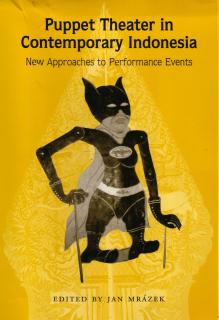
Puppet Theater in Contemporary Indonesia: New Approaches to Performance Events
Mrázek, Jan (ed.), Puppet Theater in Contemporary Indonesia: New Approaches to Performance Events, Michigan: University of Michigan CSEAS, 2002
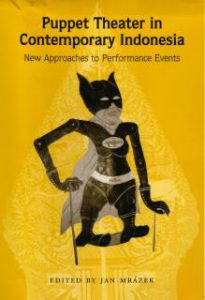 Written by both scholars and performers, the nearly two-dozen essays that comprise this volume examine performance events in contemporary contexts to show how performances are involved in the changing sociocultural climate, economy, and politics of Indonesia. Issues include the life and work of performers; changing performance aesthetics; changes in ritual functions; interaction with mass media; local identity; gender; and the epistemologies and politics of writing on performance in the colonial and postcolonial periods. The book is an excellent introduction to a fascinating subject, and will prove valuable not only to those working on performance studies, cultural theory, anthropology, and Asian studies, but also to anyone who simply wants to know something about a very highly developed form of art that is crucially important to understanding Indonesian society.
Written by both scholars and performers, the nearly two-dozen essays that comprise this volume examine performance events in contemporary contexts to show how performances are involved in the changing sociocultural climate, economy, and politics of Indonesia. Issues include the life and work of performers; changing performance aesthetics; changes in ritual functions; interaction with mass media; local identity; gender; and the epistemologies and politics of writing on performance in the colonial and postcolonial periods. The book is an excellent introduction to a fascinating subject, and will prove valuable not only to those working on performance studies, cultural theory, anthropology, and Asian studies, but also to anyone who simply wants to know something about a very highly developed form of art that is crucially important to understanding Indonesian society.
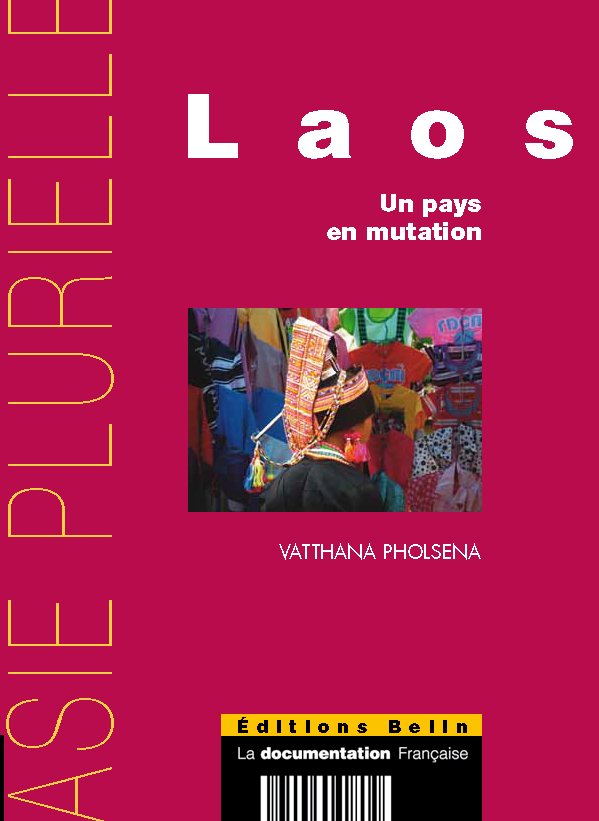
LAOS. Un pays en mutation
LAOS. Un pays en mutation, Paris: Editions Belin-La documentation Française, 2011.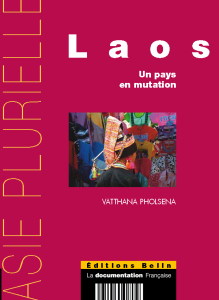
Located in the interior of mainland Southeast Asia, in the shadow of states with much greater demographic and economic weight, Laos is a lesser-known country. Yet its culture and history reflect a rich and ancient past, marked by the centuries-old relationship between the civilisations of the plains and the societies of the highlands, the ethnic and cultural complexity of which never ceases to amaze. This relationship continues to have a profound influence on the evolution of the economic, political and social landscape of the nation state. Marked by the conflicts of the 20th century, Laos emerged from the violence of war devastated but resilient. Abandoning the socialist project, following the example of its Chinese and Vietnamese allies, it is now opening its economic borders, driven by the perilous ambition to regain its place in Asia at the crossroads of trade routes. This book aims to study the historical and political trajectory of Laos in an attempt to better understand the major challenges and changes that the country is facing today.
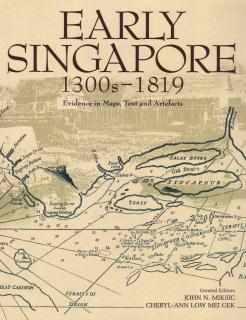
Early Singapore 1300s-1819: Evidence In Maps, Texts And Artefacts
Miksic, John N & Cheryl-Ann Low Mei Gek (eds.), Early Singapore 1300s-1819: Evidence In Maps, Texts And Artefacts, 1st ed., Singapore: Singapore History Museum, 2004
 There have been few accessible studies of the pre-1819 period of Singapore, a time usually seen as a vacant era. These nine papers set out what is known. By using written material and recent archaeological discoveries, much light is shed on the 900 or so years before Stamford Raffles "founded" Singapore. This collation of evidence from maps, excavated ceramics and other artefacts, Portuguese, Dutch, Chinese and British trading and official records, travellers' tales, and other annals enables a clearer picture of the background of modern Singapore to emerge. With colour and b&w illustrations, annotations and index.
There have been few accessible studies of the pre-1819 period of Singapore, a time usually seen as a vacant era. These nine papers set out what is known. By using written material and recent archaeological discoveries, much light is shed on the 900 or so years before Stamford Raffles "founded" Singapore. This collation of evidence from maps, excavated ceramics and other artefacts, Portuguese, Dutch, Chinese and British trading and official records, travellers' tales, and other annals enables a clearer picture of the background of modern Singapore to emerge. With colour and b&w illustrations, annotations and index.
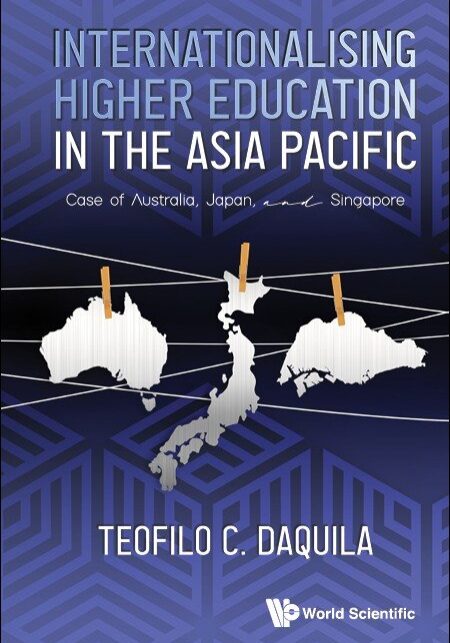
Internationalising Higher Education in the Asia Pacific Case of Australia, Japan and Singapore
Teofilo C. Daquila, Internationalising Higher Education in the Asia Pacific Case of Australia, Japan and Singapore, World Scientific Publishing, 2022
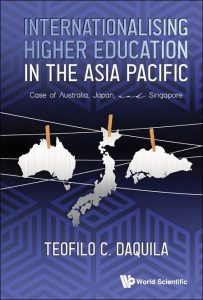
With his many years of overseas experiences as an international student, educator and scholar, Teofilo C Daquila has conducted his research on the internationalisation of higher education (IHE), as it has become an important policy issue and research topic for governments and universities around the world. He aims to determine the extent of internationalisation of higher education in the Asia-Pacific region particularly in Australia, Singapore and Japan in terms of its determinants and impacts using a multi- and inter-disciplinary framework of analysis, through historical, political, geographical, economic, social, and cultural dimensions.
Daquila examines three leading universities in the world as case studies to determine their internationalisation experiences and the extent of their competitiveness. These are the University of Melbourne, the National University of Singapore, and Kyoto University. He uses four indicators of competitiveness: governance and structure, demand conditions, factor conditions, and internationalisation strategies (using the following indicators of IHE: expansion, broadening/diversification, deepening and facilitation).
This book is highly recommended for anyone interested in the internationalisation of higher education, its determinants and multiple perspectives, the competitiveness and internationalisation experiences and strategies of universities.

Earthenware in Southeast Asia
Miksic, John N (ed.), Earthenware in Southeast Asia, Singapore: Singapore University Press, 2003.
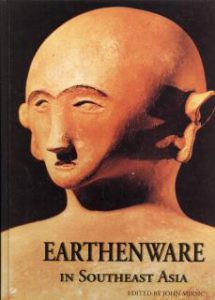 Earthenware is the most important material in Southeast Asian archaeology, yet there has been little published work aimed at understanding and dating earthenware artifacts and materials on a regional basis. A framework for understanding earthernware would help enormously in creating a more nuanced image of the cultural history of pre- and early historic Southeast Asia.
Earthenware is the most important material in Southeast Asian archaeology, yet there has been little published work aimed at understanding and dating earthenware artifacts and materials on a regional basis. A framework for understanding earthernware would help enormously in creating a more nuanced image of the cultural history of pre- and early historic Southeast Asia.
This volume draws together essays from Southeast Asia's top archaeologists, and includes findinds from every country in the region. In addition to providing a baseline of information on what is known of earthenware across the region, strong analytical work here yields new understandings, of the origins of the prehistoric tripod vessels of the Malayan Peninsula, and the role of earthenware from a kiln site in southern Thailand in the regional trade of the 11th to 14th centuries, among other subjects.
Though no one has yet written a textbook on the earthenware of Southeast Asia, this volume is an important step towards such a synthesis. It is fully illustrated with 75 halftones and 180 line art illustrations and maps.
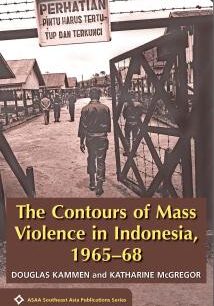
The Contours of Mass Violence in Indonesia, 1965-68
Kammen, Douglas and Katharine McGregor (eds.), The Countours of Mass Violence in Indonesia, 1965-68, Singapore: NUS Press, 2012
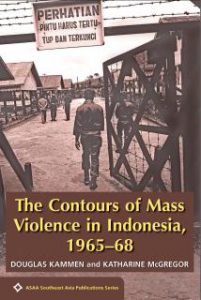 The violence directed against the political left in Indonesia from 1965 until 1968 has been the subject of intense speculation. The large number of deaths, brutal interrogations, as well as rape, torture, short- and long-tern detention and on-going discrimination inflicted on hundreds of thousands of people who make this a compelling topic. However, political sensitivities within Indonesia and a dearth of evidence made serious research on the topic extremely difficult under the New Order regime.
The violence directed against the political left in Indonesia from 1965 until 1968 has been the subject of intense speculation. The large number of deaths, brutal interrogations, as well as rape, torture, short- and long-tern detention and on-going discrimination inflicted on hundreds of thousands of people who make this a compelling topic. However, political sensitivities within Indonesia and a dearth of evidence made serious research on the topic extremely difficult under the New Order regime.
The Contours of Mass Violence in Indonesia presents case studies from diverse locations throughout the Indonesian archipelago. The accounts revolve around the impact and interpretations of the September 30th Movement and its aftermath; the roles of military and civilian groups in fomenting and perpetrating violence; short- and long-tern detention; and the legacies of the assault on the political Left. Although events unfolded differently in various parts of the country, the violence amounted to a counter-revolution intended to curtail the mass mobilization and popular participation unleashed by the national revolution some twenty years earlier. The goal was to destroy the social bases of President Sukarno's left-leaning Guided Democracy, and to establish a military regime that was authoritarian and pro-Western.
Students of Indonesia will learn much from the accounts in this volume, but the discussion will also benefit scholars concerned with the dynamics of mass violence, the Cold War, regime change and counter-revolution.

Interactions with a Violent Past. Reading Post-Conflict Landscapes in Cambodia, Laos and Vietnam
Interactions with a Violent Past. Reading Post-Conflict Landscapes in Cambodia, Laos and Vietnam, co-edited with Oliver Tappe, Singapore: NUS Press, 2013.
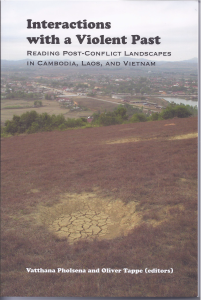
The Second and Third Indochina Wars are the subject of important ongoing scholarship, but there has been little research on the lasting impact of wartime violence on local societies and populations, in Vietnam as well as in Laos and Cambodia. Today's Lao, Vietnamese and Cambodian landscapes bear the imprint of competing violent ideologies and their perilous material manifestations. From battlefields and massively bombed terrain to reeducation camps and resettled villages, the past lingers on in the physical environment. The nine essays in this volume discuss post-conflict landscapes as contested spaces imbued with memory-work conveying differing interpretations of the recent past, expressed through material (even, monumental) objects, ritual performances, and oral narratives (or silences).While Cambodian, Lao and Vietnamese landscapes are filled with tenacious traces of a violent past, created an unsolicited and malevolent sense of place among their inhabitants, they can in turn be transformed by actions of resilient and resourceful local communities.

Phenomenology of a Puppet Theatre: Contemplations on the art of Javanese wayang kulit
Mrázek, Jan, Phenomenology of a Puppet Theatre: Contemplations on the art of Javanese wayang kulit, Leiden, KITLV Press, 2005
 No previous work on wayang has treated in depth what is the focus of this book: the power of the theatrical medium, the actuality of the performance as a physical, emotional, and social experience and event, and the sensations and feelings involved in performing and watching an all-night wayang performance. A single puppeteer moves puppets, delicately carved and painted according to a complex iconography, in dance-like patterns integrated with continuous music, which he also directs; he speaks the voices of all characters; and he represents beings and a mythological world that reflect (on) the human world, including the specific occasion and the people present. Paying attention to the wholeness of the ‘multimedia’ performance as an event, as well as to the sensations, subtle movements, and particular intonations of the performance, the author of this book bases his ‘thick description’ on years of learning to perform wayang, attending and participating in performances, interviews and discussions with people involved with wayang, supplemented by study of texts, from old manuscripts and performance manuals to newspaper articles and reports on performances. He shows the need not to be limited to any single discipline: in wayang, the relationships and interactions, for example, between visual movements and music, or between actions on the screen and actions among the audience-participants, are no less significant than, for example, the relationships within music. The book includes the most extensive discussion of recent changes in wayang theatre, its interaction with various traditional and modern entertainments, and the ways it is affected by politics and economy. A postscript focuses on the post-Soeharto era. The book is a contribution to the study of Indonesian performing arts and culture, but it is also intended for anyone interested in theatre and performing arts generally.
No previous work on wayang has treated in depth what is the focus of this book: the power of the theatrical medium, the actuality of the performance as a physical, emotional, and social experience and event, and the sensations and feelings involved in performing and watching an all-night wayang performance. A single puppeteer moves puppets, delicately carved and painted according to a complex iconography, in dance-like patterns integrated with continuous music, which he also directs; he speaks the voices of all characters; and he represents beings and a mythological world that reflect (on) the human world, including the specific occasion and the people present. Paying attention to the wholeness of the ‘multimedia’ performance as an event, as well as to the sensations, subtle movements, and particular intonations of the performance, the author of this book bases his ‘thick description’ on years of learning to perform wayang, attending and participating in performances, interviews and discussions with people involved with wayang, supplemented by study of texts, from old manuscripts and performance manuals to newspaper articles and reports on performances. He shows the need not to be limited to any single discipline: in wayang, the relationships and interactions, for example, between visual movements and music, or between actions on the screen and actions among the audience-participants, are no less significant than, for example, the relationships within music. The book includes the most extensive discussion of recent changes in wayang theatre, its interaction with various traditional and modern entertainments, and the ways it is affected by politics and economy. A postscript focuses on the post-Soeharto era. The book is a contribution to the study of Indonesian performing arts and culture, but it is also intended for anyone interested in theatre and performing arts generally.
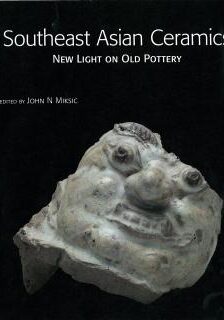
Southeast Asian Ceramics: New Light On Old Pottery
Miksic, John N (ed.), Southeast Asian Ceramics: New Light On Old Pottery, 1st ed., Singapore, Southeast Asian Ceramics Society, 2009
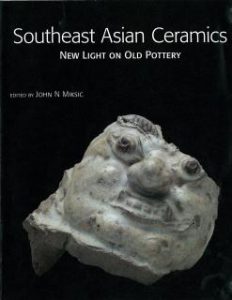 Southeast Asia Ceramics: New Light on Old Pottery accompanies the exhibition of the same name, held at the National University of Singapore Museum. In this present volume, notable archaeologist and scholar John N Miksic reconstructs a vivid image of the development of Southeast Asia's unique ceramic technology. Along with Pamela M Watkins, Dawn F Rooney and Michael Flecker, he summarises the fruits of the research of the last 40 years, beginning with the founding of the Southeast Asian Ceramic Society in Singapore in 1969. The result is a comprehensive and insightful overview of the technology, aesthetics and organisation, both economic and political, of seemingly diverse territories in pre-colonial Southeast Asia.
Southeast Asia Ceramics: New Light on Old Pottery accompanies the exhibition of the same name, held at the National University of Singapore Museum. In this present volume, notable archaeologist and scholar John N Miksic reconstructs a vivid image of the development of Southeast Asia's unique ceramic technology. Along with Pamela M Watkins, Dawn F Rooney and Michael Flecker, he summarises the fruits of the research of the last 40 years, beginning with the founding of the Southeast Asian Ceramic Society in Singapore in 1969. The result is a comprehensive and insightful overview of the technology, aesthetics and organisation, both economic and political, of seemingly diverse territories in pre-colonial Southeast Asia.
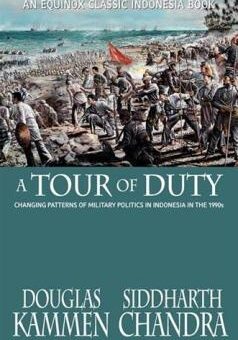
A Tour of Duty: Changing Patterns of Military Politics in Indonesia in the 1990s
Kammen, Douglas and Siddharth Chandra, A Tour of Duty: Changing Patterns of Military Politics in Indonesia in the 1990s, Jakarta, Indonesia: Equinox Publishing, 2010
 This is a study of the internal dynamics of the Indonesian Army in the decade and a half leading up to the fall of Soeharto. While the empirical analysis is limited to the Army, the findings have implications for the military as a whole. Throughout the work, we use the word Army when referring to the single service branch, and the terms 'ABRI', 'Armed Forces', and 'military' interchangeably to refer to the four service branches together. While the changing size of the officer corps has presented the Army with certain new opportunities, it has also raised new conflicts and tensions. Primary among these are questions of changing career prospects, alterations in the nature of the military and its ability to continue its direct role in socio-political affairs, and emerging divisions between active and retired officers.
This is a study of the internal dynamics of the Indonesian Army in the decade and a half leading up to the fall of Soeharto. While the empirical analysis is limited to the Army, the findings have implications for the military as a whole. Throughout the work, we use the word Army when referring to the single service branch, and the terms 'ABRI', 'Armed Forces', and 'military' interchangeably to refer to the four service branches together. While the changing size of the officer corps has presented the Army with certain new opportunities, it has also raised new conflicts and tensions. Primary among these are questions of changing career prospects, alterations in the nature of the military and its ability to continue its direct role in socio-political affairs, and emerging divisions between active and retired officers.
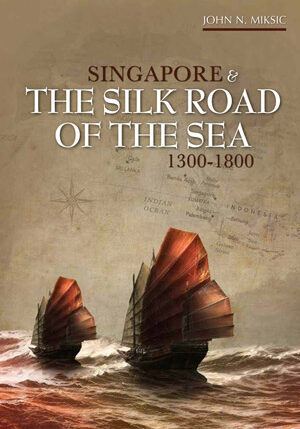
Singapore and the Silk Road of the Sea, 1300-1800
Miksic, John N, Singapore and the Silk Road of the Sea, 1300-1800, Singapore: NUS Press, 2013.
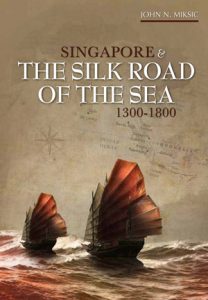 Beneath the modern skyscrapers of Singapore lie the remains of a much older trading port, prosperous and cosmopolitan and a key node in the maritime Silk Road. This book synthesizes 25 years of archaeological research to construct the 14th-century port of Singapore in greater detail than is possible for any other Southeast Asian city. The picture that emerges is of a port where people processed raw materials, used money, and had specialized occupations. Within its defensive wall, the city was well organized and prosperous, with a cosmopolitan population that included residents from China, other parts of Southeast Asia, and the Indian Ocean. Fully illustrated, with more than 300 maps and color photos, Singapore and the Silk Road of the Seapresents Singapore's history in the context of Asia's long-distance maritime trade in the years between 1300 and 1800: it amounts to a dramatic new understanding of Singapore's precolonial past.
Beneath the modern skyscrapers of Singapore lie the remains of a much older trading port, prosperous and cosmopolitan and a key node in the maritime Silk Road. This book synthesizes 25 years of archaeological research to construct the 14th-century port of Singapore in greater detail than is possible for any other Southeast Asian city. The picture that emerges is of a port where people processed raw materials, used money, and had specialized occupations. Within its defensive wall, the city was well organized and prosperous, with a cosmopolitan population that included residents from China, other parts of Southeast Asia, and the Indian Ocean. Fully illustrated, with more than 300 maps and color photos, Singapore and the Silk Road of the Seapresents Singapore's history in the context of Asia's long-distance maritime trade in the years between 1300 and 1800: it amounts to a dramatic new understanding of Singapore's precolonial past.
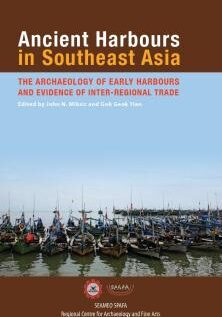
Ancient Harbours in Southeast Asia : The Archaeology of Early Harbours and Evidence of Inter-Regional Trade
Miksic, John N and Goh Geok Yian (eds.),Ancient Harbours in Southeast Asia : The Archaeology of Early Harbours and Evidence of Inter-Regional Trade, Thailand: SEAMEO SPAFA, 2013.
 The archaeology of harbours is critical to understanding patterns of ancient trade and inter-regional interaction. Systematic excavations of sites of harbours, ports and docks are, however, extremely rare in Southeast Asia. Even though ancient trade has always been a favourite topic of scholars working on ancient Southeast Asia, the working areas of ports/harbours have attracted very little attention. This is the first publication to focus on the archaeology of Southeast Asian harbours.
The archaeology of harbours is critical to understanding patterns of ancient trade and inter-regional interaction. Systematic excavations of sites of harbours, ports and docks are, however, extremely rare in Southeast Asia. Even though ancient trade has always been a favourite topic of scholars working on ancient Southeast Asia, the working areas of ports/harbours have attracted very little attention. This is the first publication to focus on the archaeology of Southeast Asian harbours.
This book compiles some of the first research by Southeast Asian archaeologists on this significant but neglected subject. It contains much new information on the roles of Southeast Asians in ancient commerce and industry, and on the nature of cultural interaction which has taken place in these sites for over 2,000 years.
The bulk of contributions in this volume concern Indonesia, as befits the immense geographical expanse of a nation comprising thousands of islands. The book brings together studies on Sumatra, Java, Bali, Sulawesi, and the eastern part of the Indonesian archipelago. Another chapter deals with protohistoric Malaysia. Chapters on the Philippines range from the thousand-year-old trading port of Butuan to Spanish colonial-era shipyards. A study of late prehistoric sites of inter-regional seaborne trade in peninsular Thailand indicates that these may be the oldest harbours in the region to link the Indian Ocean to the South China Sea. The publication should shed more light and encourage further research on this neglected field.
Icons of Art: The Collections of the National Museum of Indonesia
Miksic, John N, Icons of Art: The Collections of the National Museum of Indonesia, Indonesia: BAB Publishing, 2007.
![]() The Indonesian National Museum is one of the oldest museums in Asia, and for anyone interested in the cultural and national heritage of Indonesia it is the one place not to be missed. For those unable to visit Indonesia, Icons of Art brings this heritage to you in an exquisite and detailed volume. Its collections span an immense range in time and space, covering millions of years of natural and human history and thousands of islands scattered between the Indian and Pacific oceans. Icons of Art is an exploration of the National Museum's collections, including many never-before exhibited treasures, on the occasion of a major expansion of the museum.
The Indonesian National Museum is one of the oldest museums in Asia, and for anyone interested in the cultural and national heritage of Indonesia it is the one place not to be missed. For those unable to visit Indonesia, Icons of Art brings this heritage to you in an exquisite and detailed volume. Its collections span an immense range in time and space, covering millions of years of natural and human history and thousands of islands scattered between the Indian and Pacific oceans. Icons of Art is an exploration of the National Museum's collections, including many never-before exhibited treasures, on the occasion of a major expansion of the museum.
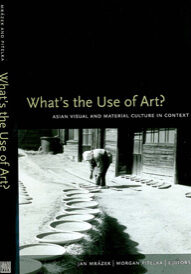
What's the Use of Arts? - Asian Visual and Material Culture in Context
Mrázek, Jan and Morgan Pitelka (eds.), What’s the Use of Arts? – Asian Visual and Material Culture in Context, Hawaii: University of Hawai’i Press, 2008
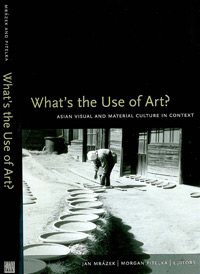
Post-Enlightenment notions of culture, which have been naturalized in the West for centuries, require that art be autonomously beautiful, universal, and devoid of any practical purpose. The authors of this multidisciplinary volume seek to complicate this understanding of art by examining art objects from across Asia with attention to their functional, ritual, and everyday contexts. From tea bowls used in the Japanese tea ceremony to television broadcasts of Javanese puppet theater, from Indian wedding-chamber paintings to art looted by the British army from the Chinese emperor’s palace, from the adventures of a Balinese magical dagger to the political functions of classical Khmer images – the authors challenge prevailing notions of artistic value by introducing new ways of thinking about culture.
The chapters consider art objects as they are involved in the world: how they operate and are experienced in specific sites, collections, rituals, performances, political and religious events and imagination, and individual people’s lives; how they move from one context to another and change meaning and value in the process (for example, when they are collected, traded, and looted, or when their images appear in art history textbooks); how their memories and pasts are or are not part of their meaning and experience. Rather than lead to a single, universalizing definition of art, the essays offer multiple, divergent, and case-specific answers to the question “What is the use of art?” and argue for the need to study art as it is used and experienced. This series of case studies from Asia helps broaden and decolonize our understanding of what art is and asserts the need to go beyond established ways of thinking about art in English-language scholarship.
An engaging and wide-ranging collection, What’s the Use of Art? will appeal not only to Asia art historians, historians, and anthropologists, but also to collectors and readers with an interest in museum studies and material culture studies.
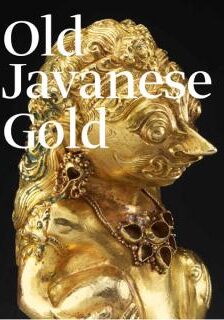
Old Javanese Gold
Miksic, John N, Old Javanese Gold, 2nd revised ed., New Haven: Yale University Press, 2011.
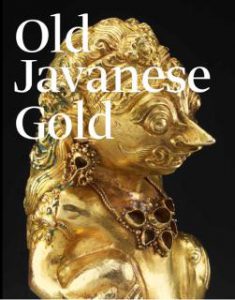
While ancient Javanese bronze and ironwork have long elicited interest, there is a lesser-known yet equally fascinating aspect of the Indonesian island's history: gold artifacts, including jewelry, clothing accessories, statues, coins, and containers. Not only do these objects display exceptional craftsmanship, they also provide a significant source of information on Javanese society, culture, religion, economy, technology, and art from the 1st century BC to 1500 AD.
This revised and expanded edition of the 1990 publication Old Javanese Gold celebrates Valerie and Hunter Thompson's 2007 gift of Javanese gold objects to the Yale University Art Gallery and the subsequent founding of the Department of Indo-Pacific Art. Along with entirely new photography and a fresh design, the book's essays have been updated to incorporate recent discoveries — including the Wonoboyo hoard, one of the most important gold hoards ever excavated in Southeast Asia.
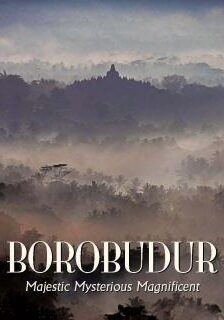
Borobudur: Majestic Mysterious Magnificent
Miksic, John N and Timbul Haryono Borobudur: Majestic Mysterious Magnificent, Indonesia: BAB Publishing, 2010.
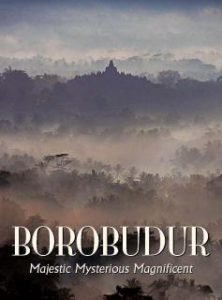 Buddhism might not have originated in Indonesia, but one of the world's greatest Buddhist monuments stands handsomely in a volcano-rimmed valley on the island of Java in Indonesia. Celebrating the 9th-century wonder that models the Buddhist conception of the universe and has never failed to attract visits from thousands of tourists and spiritual pilgrims from the world over each year, this beautiful book provides insightful and inspiring texts from scholars who have dedicated years of their time studying the mystical monuments that are combined with attractive photos. Those who are keen on learning more about architecture, archaeolofy and ancient Asian history will find the deftly written texts in this volume as good reference. Those who merely want to keep a token to treasure the historical and monumental construction will find this book perfect to adjourn the coffee tables at their home.
Buddhism might not have originated in Indonesia, but one of the world's greatest Buddhist monuments stands handsomely in a volcano-rimmed valley on the island of Java in Indonesia. Celebrating the 9th-century wonder that models the Buddhist conception of the universe and has never failed to attract visits from thousands of tourists and spiritual pilgrims from the world over each year, this beautiful book provides insightful and inspiring texts from scholars who have dedicated years of their time studying the mystical monuments that are combined with attractive photos. Those who are keen on learning more about architecture, archaeolofy and ancient Asian history will find the deftly written texts in this volume as good reference. Those who merely want to keep a token to treasure the historical and monumental construction will find this book perfect to adjourn the coffee tables at their home.
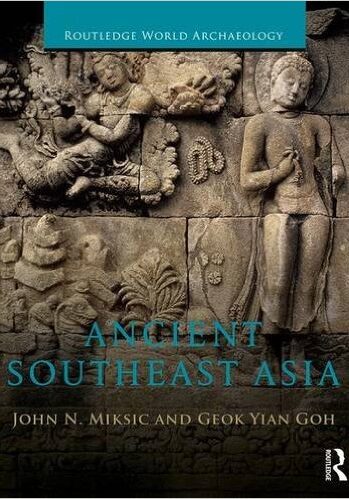
Ancient Southeast Asia
Miksic, John N and Goh Geok Yian, Ancient Southeast Asia, London and New York: Routledge, 2016
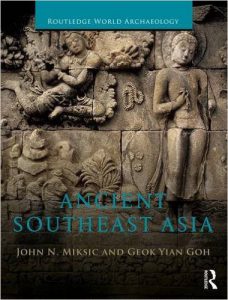 Ancient Southeast Asia provides readers with a much needed synthesis of the latest discoveries and research in the archaeology of the region, presenting the evolution of complex societies in Southeast Asia from the protohistoric period, beginning around 500BC, to the arrival of British and Dutch colonists in 1600. Well-illustrated throughout, this comprehensive account explores the factors which established Southeast Asia as an area of unique cultural fusion. Miksic and Goh explore how the local population exploited the abundant resources available, developing maritime transport routes which resulted in economic and cultural wealth, including some of the most elaborate art styles and monumental complexes ever constructed.
Ancient Southeast Asia provides readers with a much needed synthesis of the latest discoveries and research in the archaeology of the region, presenting the evolution of complex societies in Southeast Asia from the protohistoric period, beginning around 500BC, to the arrival of British and Dutch colonists in 1600. Well-illustrated throughout, this comprehensive account explores the factors which established Southeast Asia as an area of unique cultural fusion. Miksic and Goh explore how the local population exploited the abundant resources available, developing maritime transport routes which resulted in economic and cultural wealth, including some of the most elaborate art styles and monumental complexes ever constructed.
The book’s broad geographical and temporal coverage, including a chapter on the natural environment, provides readers with the context needed to understand this staggeringly diverse region. It utilizes French, Dutch, Chinese, Malay-Indonesian and Burmese sources and synthesizes interdisciplinary theoretical perspectives and data from archaeology, history and art history. Offering key opportunities for comparative research with other centres of early socio-economic complexity, Ancient Southeast Asiaestablishes the area’s importance in world history.

Rethinking Cultural Resource Management in Southeast Asia: Preservation, Development, and Neglect
Miksic, John, Goh Geok Yian and Sue O'Connor (eds.), Rethinking Cultural Resource Management in Southeast Asia: Preservation, Development, and Neglect , London: Anthem Press, 2011.
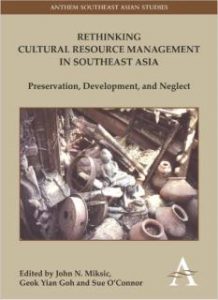 Presenting both the need for – and difficulty of – introducing effective cultural resource management (CRM) in the region, ‘Rethinking Cultural Resource Management in Southeast Asia' explores the challenges facing efforts to protect Southeast Asia’s indigenous cultures and archaeological sites from the ravages of tourism and economic development. Recognising the inapplicability of Euro-American solutions to this part of the world, the essays of this volume investigate their own set of region-specific CRM strategies, and acknowledge both the necessity and possibility of mediating between the conflicting interests of short-term profitability and long-term sustainability.
Presenting both the need for – and difficulty of – introducing effective cultural resource management (CRM) in the region, ‘Rethinking Cultural Resource Management in Southeast Asia' explores the challenges facing efforts to protect Southeast Asia’s indigenous cultures and archaeological sites from the ravages of tourism and economic development. Recognising the inapplicability of Euro-American solutions to this part of the world, the essays of this volume investigate their own set of region-specific CRM strategies, and acknowledge both the necessity and possibility of mediating between the conflicting interests of short-term profitability and long-term sustainability.
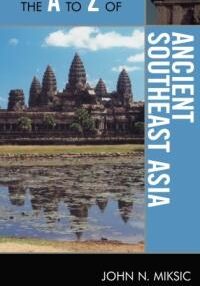
The A to Z of Ancient Southeast Asia
Miksic, John N, The A to Z of Ancient Southeast Asia, Lanham, Maryland: Scarecrow Press, 2010.
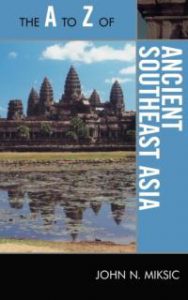
Anyone who has seen the stunning ruins at Angkor, Bagan, and Barabudur will readily understand why Southeast Asia is the host of so many United Nations Educational, Scientific, and Cultural Organization World Heritage Sites. As beautiful as the spiraling towers, intricate carvings, and delicate bas-reliefs adorning these monuments are, however, they just barely scratch the surface of the immense historical and cultural heritage of the region.
Covering the countries of Brunei, Cambodia, Indonesia, Laos, Malaysia, Myanmar, the Philippines, Singapore, Thailand, and Vietnam during the period from the first to the fifteenth century, The A to Z of Ancient Southeast Asia helps us comprehend the vast and complex history of the region through a chronology, a glossary, a bibliography, an introduction, appendixes, maps, photographs, diagrams, and hundreds of cross-referenced dictionary entries on the major (and many minor) sites, the more significant historical figures, the kingdoms they ruled over, the economic and social relations between them, and the artistic, cultural, and religious context.
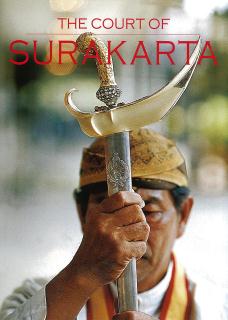
The Court of Surakarta
Miksic, John N, The Court of Surakarta, Menteng, Jakarta: BAB Publishing Indonesia, 2012
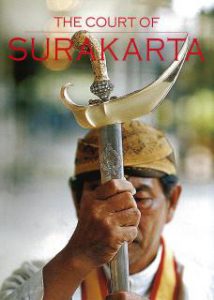 In the early 20th century, Indonesia was divided into 350 greater and lesser kingdoms. Although Dutch imperialism influenced this pattern, the political history of the archipelago over the centuries had been marked by the expansion and contraction of various local spheres of influence. One of the oldest and most powerful centers of power in the sprawling Indonesian archipelago has always been located in central Java. The court of Surakarta Hadiningrat, formed in the 1740s, can trace its origins to kingdoms of the 8th century. In 1945 the ancient kingdoms were superseded by the newly-formed Republic of Indonesia.
In the early 20th century, Indonesia was divided into 350 greater and lesser kingdoms. Although Dutch imperialism influenced this pattern, the political history of the archipelago over the centuries had been marked by the expansion and contraction of various local spheres of influence. One of the oldest and most powerful centers of power in the sprawling Indonesian archipelago has always been located in central Java. The court of Surakarta Hadiningrat, formed in the 1740s, can trace its origins to kingdoms of the 8th century. In 1945 the ancient kingdoms were superseded by the newly-formed Republic of Indonesia.
The courts with their panoply of ancient traditions gave way to a new political ethos in which individual achievement replaced aristocratic birth as the main criteria for success. Overnight the courts were reduced to political irrelevance. Their rulers lost both inherited power and traditional sources of income. Many simply disappeared, while others clung to a precarious existence as tourist attractions or cultural centers.
Java is now home to over 100 million people, two-thirds of whom belong to the ethnic group known as Javanese. Javanese culture is known for its high degree of refinement and devotion to ideas of spirituality and etiquette. This stereotype, fostered in part by the Dutch, masks a much richer complexity. The past half-century has seen much rapid social change, usually peaceful, but more than once marked by extreme violence. The court of Surakarta continues to strive to find new ways to achieve the harmony between change and tradition which Javanese philosophy has always emphasized as one of its main goals.
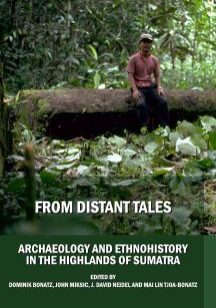
From Distant Tales: Archaeology and Ethnohistory in the Highlands of Sumatra
Miksic, John N, Dominik Bonatz, J. David Neidel & Mai Lin Tjoa-Bonatz (eds.), From Distant Tales: Archaeology and Ethnohistory in the Highlands of Sumatra, United Kingdom: Cambridge Scholars Publishing, 2009
 This is the most comprehensive book devoted to Sumatra in more than half a century. It summarizes earlier studies, and provides a huge amount of new knowledge for the first time in readily accessible form. Sumatra is one of the world’s largest islands, rich in flora and fauna, minerals and timber, and located at the midpoint of the maritime route between China and India. These are ideal conditions for the creation of a fascinating history. Sumatra has played a major role in world trade for 2,000 years, but its culture and archaeology have been surprisingly neglected. This volume sets out to remedy this defect. With chapters on history, archaeology, anthropology, folklore, and religion, the authors focus particular attention on the relations between the coastal peoples who are best known to outsiders, and the hinterlands, where most of the important resources lie. The list of authors includes most of the principal living authorities on Sumatra. Their cumulative experience consists of many years on all parts of the island. The book is copiously illustrated, and includes a comprehensive bibliography for those who wish to pursue further study of the wide range of topics covered.
This is the most comprehensive book devoted to Sumatra in more than half a century. It summarizes earlier studies, and provides a huge amount of new knowledge for the first time in readily accessible form. Sumatra is one of the world’s largest islands, rich in flora and fauna, minerals and timber, and located at the midpoint of the maritime route between China and India. These are ideal conditions for the creation of a fascinating history. Sumatra has played a major role in world trade for 2,000 years, but its culture and archaeology have been surprisingly neglected. This volume sets out to remedy this defect. With chapters on history, archaeology, anthropology, folklore, and religion, the authors focus particular attention on the relations between the coastal peoples who are best known to outsiders, and the hinterlands, where most of the important resources lie. The list of authors includes most of the principal living authorities on Sumatra. Their cumulative experience consists of many years on all parts of the island. The book is copiously illustrated, and includes a comprehensive bibliography for those who wish to pursue further study of the wide range of topics covered.
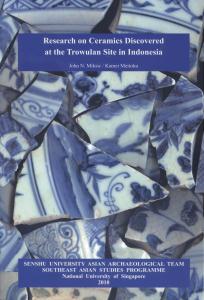
Research on the Ceramics Discovered at the Trowulan Site in Indonesia
Miksic, John N and Kamei Meitoku Research on the Ceramics Discovered at the Trowulan Site in Indonesia, Tokyo,Japan: Senshu University, 2010.
 A collection of sherds donated to Dr. Miksic consists of very important examples of Yuan Dynasty blue and white ceramics which are believed to have been collected at Trowulan, east Java, Indonesia. This was the 14th-century capital of Majapahit, which claimed Singapore as one of its dependencies. The blue and white sherds are probably the largest single collection of this type in the world. Dr. Miksic and Prof. Kamei Meitoku of Senshu University, Japan, collaborated on a two-year project to catalogue and analyze this material, which will be of interest to scholars working on the development of Chinese porcelain in general, and in trade between China and Southeast Asia in the 14th century.
A collection of sherds donated to Dr. Miksic consists of very important examples of Yuan Dynasty blue and white ceramics which are believed to have been collected at Trowulan, east Java, Indonesia. This was the 14th-century capital of Majapahit, which claimed Singapore as one of its dependencies. The blue and white sherds are probably the largest single collection of this type in the world. Dr. Miksic and Prof. Kamei Meitoku of Senshu University, Japan, collaborated on a two-year project to catalogue and analyze this material, which will be of interest to scholars working on the development of Chinese porcelain in general, and in trade between China and Southeast Asia in the 14th century.
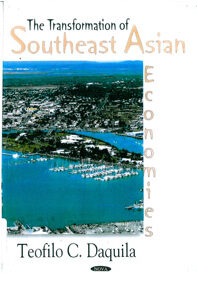
The Transformation of Southeast Asian Economies
Daquila, Teofilo C, The Transformation of Southeast Asian Economies, 2nd ed., New York: Nova Science Publishers, 2007.
 The book analyses the growth, development and crisis experiences of the Southeast Asian economies, in particular, Indonesia, Malaysia, the Philippines, Singapore and Thailand. The proposition is developed that the robust economic performance of the Southeast Asian economies during the past four decades has been attributed to the various factors, developments and independent national policies which have been pursued by the individual member countries rather than to any regional economic framework. The book covers eleven topics which are suitable for a one-semester course on the economics of Southeast Asia. Also, it has a narrower area coverage as it focuses only on the five Southeast Asian economies mentioned earlier. The sectoral treatment of the impact of the 1997/98 crisis and the analytical treatment of policy responses to the crisis differentiate this book from other publications on the same topic. Finally, the book provides an analysis of national developments, policies and factors which have contributed to the transformation of the respective Southeast Asian economies.
The book analyses the growth, development and crisis experiences of the Southeast Asian economies, in particular, Indonesia, Malaysia, the Philippines, Singapore and Thailand. The proposition is developed that the robust economic performance of the Southeast Asian economies during the past four decades has been attributed to the various factors, developments and independent national policies which have been pursued by the individual member countries rather than to any regional economic framework. The book covers eleven topics which are suitable for a one-semester course on the economics of Southeast Asia. Also, it has a narrower area coverage as it focuses only on the five Southeast Asian economies mentioned earlier. The sectoral treatment of the impact of the 1997/98 crisis and the analytical treatment of policy responses to the crisis differentiate this book from other publications on the same topic. Finally, the book provides an analysis of national developments, policies and factors which have contributed to the transformation of the respective Southeast Asian economies.
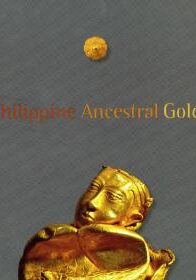
Philippine Ancestral Gold
Miksic, John, Florina H. Capistrano- Baker and John Guy (eds.), Philippine Ancestral Gold, Singapore: NUS Press, 2012.
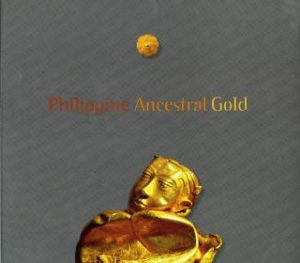
Philippine Ancestral Gold is a spectacular publication in full-color that features more than 1,000 gold objects that were recovered in the Philippines from the 1960s to 1981 and now form part of the collection of the Ayala Museum in Manila. Many of these treasures were found in association with tenth-to-twelfth century Chinese export ceramics, and formal similarities with objects from other Southeast Asian cultures affirm regional affinities and inter-island trade networks that flourished in the region before there was regular contact with the Western world. Adornments of elite individuals and the deities they adored include a spectacular array of golden sashes, necklaces, pectorals, diadems, earrings, finger rings, and arm and leg ornaments.
The book situates these objects within the context of early Southeast Asian history. In the first chapter, Floriana H. Capistrano-Baker outlines the history of the collection and presents an overview of the objects according to over-lapping categories of form, function, technology, and geographic provenance. In the second chapter, John Miksic explains how the collection contributes to a reassessment of the prehistory of Southeast Asia. Miksic notes the persistence of indigenous forms and the localization of imported traditions, and discusses the correlation between burial practices and social organization and suggests that the removal of gold objects from circulation through ritual burial is an indicator of non-hereditary leadership. Chapter 3, John Guy examines the meaning and metamorphosis of forms in comparison with related material recovered in the region. Guy highlights stylistic similarities and differences between the Philippine objects and those from such cultures as Java, Champa, and Borneo. He discusses as well the important role of export ceramics in dating associated gold finds. Chapter 4 describes related finds from the Butuan-Surigao-Agusan region in light of the rise and fall of different polities in Southeast Asia.
This extraordinary collection exists because of the passion and dedication of Leandro and Cecilia Locsin, whose vision of preserving for future generations these marvelous objects provides valuable glimpses into the Philippine precolonial past, and is a remarkable homage to the Filipino people.
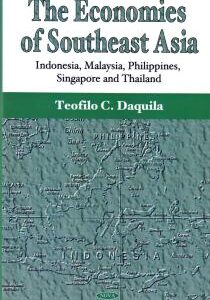
The Economies of Southeast Asia: Indonesia, Malaysia, Philippines, Singapore and Thailand
Daquila, Teofilo C, The Economies of Southeast Asia: Indonesia, Malaysia, Philippines, Singapore and Thailand, New York: Nova Science Publishers, 2005.
 This book analyses the growth, development and crisis experiences of the Southeast Asian economies, in particular, Indonesia, Malaysia, the Philippines, Singapore and Thailand -- also known as ASEAN-5. The proposition is developed that the robust economic performance of the Southeast Asian economies during the past four decades has been attributed to the various factors, developments and independent national policies which have been pursued by the individual member countries rather than to any regional economic framework. The book covers eleven topics which is suitable for a one-semester course on the economics of Southeast Asia. Also, it has a narrower area coverage as it focuses only on the five economies, namely, Indonesia, Malaysia, the Philippines, Singapore, and Thailand. The sectoral treatment of the crisis impact and the analytical treatment of policy responses to the crisis differentiate this book from other publications on the same topic. Finally, this book provides an analysis of national developments, policies and factors which have contributed to the economic transformation of the respective Southeast Asian economies.
This book analyses the growth, development and crisis experiences of the Southeast Asian economies, in particular, Indonesia, Malaysia, the Philippines, Singapore and Thailand -- also known as ASEAN-5. The proposition is developed that the robust economic performance of the Southeast Asian economies during the past four decades has been attributed to the various factors, developments and independent national policies which have been pursued by the individual member countries rather than to any regional economic framework. The book covers eleven topics which is suitable for a one-semester course on the economics of Southeast Asia. Also, it has a narrower area coverage as it focuses only on the five economies, namely, Indonesia, Malaysia, the Philippines, Singapore, and Thailand. The sectoral treatment of the crisis impact and the analytical treatment of policy responses to the crisis differentiate this book from other publications on the same topic. Finally, this book provides an analysis of national developments, policies and factors which have contributed to the economic transformation of the respective Southeast Asian economies.

Bagan and the World: Early Myanmar and Its Global Connections
Miksic, John N, Goh Geok Yian and Michael Aung Thwin (eds.), Bagan and the World: Early Myanmar and Its Global Connections, Singapore: ISEAS-Yusof Ishak Institute, 2017.
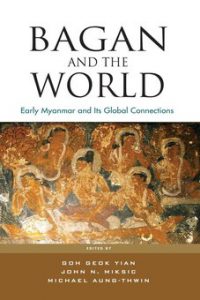 The archaeological site of Bagan and the kingdom which bore its name contains one of the greatest concentrations of ancient architecture and art in Asia. Much of what is visible today consists of ruins of Buddhist monasteries. While these monuments are a major tourist attraction, recent advances in archaeology and textual history have added considerable new understanding of this kingdom, which flourished between the 11th and 14th centuries. Bagan was not an isolated monastic site; its inhabitants participated actively in networks of Buddhist religious activity and commerce, abetted by the site's location near the junction where South Asia, China and Southeast Asia meet. This volume presents the result of recent research by scholars from around the world, including indigenous Myanmar people, whose work deserves to be known among the international community. The perspective on Myanmar's role as an integral part of the intellectual, artistic and economic framework found in this volume yields a glimpse of new themes which future studies of Asian history will no doubt explore.
The archaeological site of Bagan and the kingdom which bore its name contains one of the greatest concentrations of ancient architecture and art in Asia. Much of what is visible today consists of ruins of Buddhist monasteries. While these monuments are a major tourist attraction, recent advances in archaeology and textual history have added considerable new understanding of this kingdom, which flourished between the 11th and 14th centuries. Bagan was not an isolated monastic site; its inhabitants participated actively in networks of Buddhist religious activity and commerce, abetted by the site's location near the junction where South Asia, China and Southeast Asia meet. This volume presents the result of recent research by scholars from around the world, including indigenous Myanmar people, whose work deserves to be known among the international community. The perspective on Myanmar's role as an integral part of the intellectual, artistic and economic framework found in this volume yields a glimpse of new themes which future studies of Asian history will no doubt explore.
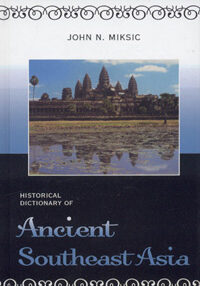
Historical Dictionary of Ancient Southeast Asia
Miksic, John N. Historical Dictionary of Ancient Southeast Asia, Lanham/Toronto/Plymouth: Scarecrow Press, 2006.
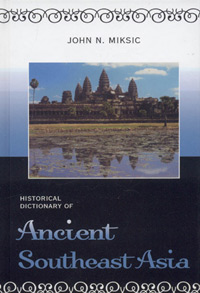
Anyone who has seen the stunning ruins at Angkor, Bagan or Barabudur will readily understand why Southeast Asia is the host of so many UNESCO World Heritage Sites. But this is only part of an immense historical and cultural heritage, much of which is revealed in this careful and thought-provoking guide which not only helps us grasp their value but also comprehend the society in which they were created during a period of over a thousand years.
This Historical Dictionary of Ancient Southeast Asia is just what its title says, with a dictionary section that includes entries on the major (and many minor) sites, and also the more significant historical figures, the kingdoms and lesser entities they ruled over, the economic and social relations between them and also with others further afield, and the artistic, cultural and religious context. The flow of history is also followed in the chronology and introduction. Those who visit the region and sites will benefit from the maps and diagrams. Those who want to know more can turn to the bibliography, and they can learn the technical terms from the glossary.
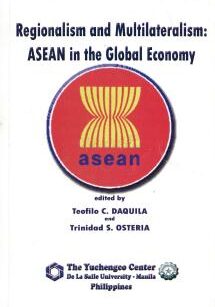
Regionalism and Multilateralism: ASEAN in the Global Economy
Daquila, Teofilo C and Trinidad Osteria (eds.), Regionalism and Multilateralism: ASEAN in the Global Economy, Manila: Yuchengco Centre, De La Salle University, 2005.
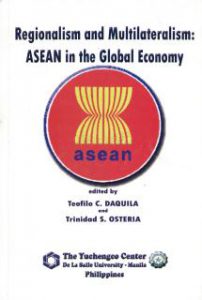 This book is about ASEAN - and its interactions with the global economy. ASEAN has participated in multilateral initiatives such as the World Trade Organization. It has also been involved in intra-regional activities including trade liberalization measures that will pave the way for the creation of an ASEAN Free Trade Area (AFTA). Moreover, it has participated in extra-regional affairs with various countries such as the United States, Japan, United Kingdom, France, Germany, Netherlands, China, and Korea, to name a few. It has also been involved with various regional groupings such as the European Union (EU) and the North Atlantic Free Trade Agreement (NAFTA), as well as with regional fora such as the Asia-Pacific Economic Cooperation (APEC) and the Asia-Europe Meeting (ASEM).
This book is about ASEAN - and its interactions with the global economy. ASEAN has participated in multilateral initiatives such as the World Trade Organization. It has also been involved in intra-regional activities including trade liberalization measures that will pave the way for the creation of an ASEAN Free Trade Area (AFTA). Moreover, it has participated in extra-regional affairs with various countries such as the United States, Japan, United Kingdom, France, Germany, Netherlands, China, and Korea, to name a few. It has also been involved with various regional groupings such as the European Union (EU) and the North Atlantic Free Trade Agreement (NAFTA), as well as with regional fora such as the Asia-Pacific Economic Cooperation (APEC) and the Asia-Europe Meeting (ASEM).

